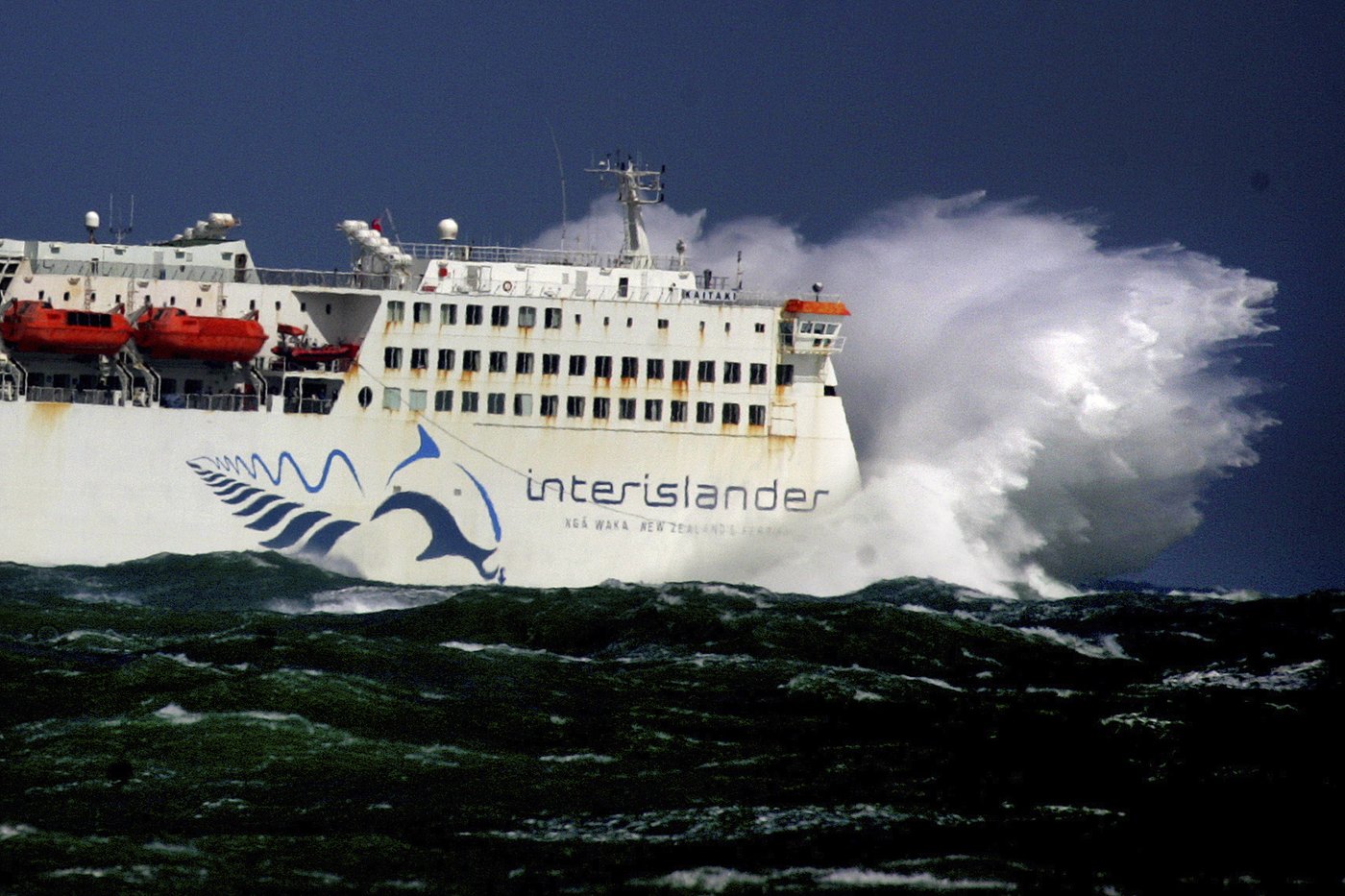Elevate your local knowledge
Sign up for the iNFOnews newsletter today!

WELLINGTON, New Zealand (AP) — Wild weather during New Zealand ’s peak summer holiday period has disrupted travel for thousands of passengers on ferries that cross the sea between the country’s main islands.
The havoc wrought by huge swells and gales in the deep and turbulent Cook Strait between the North and South Islands is a recurring feature of the country’s roughest weather. Breakdowns of New Zealand’s aging ferries have also caused delays.
But unlike in Britain and Japan, New Zealand has not seriously considered an undersea tunnel beneath the strait that more than 1 million people cross by sea each year. Although every New Zealander has an opinion on the idea, the last time a prime minister was known to have suggested building one was in 1904.
A tunnel or bridge crossing the approximately 25-30 kilometers (15-18 miles) of volatile sea is so unlikely for the same reason that regularly vexes the country’s planners — solutions for traversing New Zealand’s remote, rugged and hazard-prone terrain are logistically fraught, analysts said.
Why isn’t a tunnel practical?

A Cook Strait tunnel would dramatically reduce the three- to four-hour sailing time between the North Island, home to 75% of the population, and the South.
“But it would chew up, off the top of my head, about 20 years of the country’s entire transport infrastructure development budget in one project,” said Nicolas Reid, transport planner at MRCagney.
He estimated a cost for a tunnel of 50 billion New Zealand dollars ($28 billion), comparable in today’s terms to the price of the undersea tunnel that connects Britain and Europe by rail. New Zealand is the same size as the United Kingdom — but the U.K. has a population of 69 million, more than 13 times New Zealand’s.
It’s also about the same size as Japan, which is home to the Seikan undersea rail tunnel connecting the islands of Honshu and Hokkaido — and has a population of 124 million.
“We have a large infrastructure burden if we want to reach out across the country,” said Reid. “And we’ve only got 5 million people to pay for it.”

New Zealand’s volatile ground could also prove a problem. Perched on the boundary between tectonic plates, fault lines run under both the North and South Islands and earthquakes are sometimes centered in the strait, said seismologist John Risteau of GNS.
Opposing tides and winds make journeys unpredictable
Sailing on both Cook Strait ferry services — which have five ships transporting people, vehicles and freight — resumed Tuesday after two days of dangerous waves. Clearing the backlog meant more waiting and some passengers on one carrier said they could not book a new berth for a fortnight.
The Cook Strait is less calm than many worldwide because it features opposing tides at each end — one where it joins the Tasman Sea and the other where it meets the Pacific Ocean.
“We tend to have the prevailing, dominating wind funnel through Cook Strait, northerlies or southerlies, and that’s why they’re stronger there,” said Gerard Bellam, a forecaster for the weather agency MetService. Swells in the strait this week reached 9 meters (30 feet), he said.

Julia Rufey, an English tourist waiting at the Wellington terminal, said she had flown between North Island and South Island on previous trips, but “adventure” had prompted her to choose the ferry.
“We thought, come to Wellington, try the ferry, which is already 3 1/2 hours late,” she said.
No clear plans on what to do about aging ferries
The ferries themselves, prone to breakdowns and more than half of them state-owned, have long been a political hot potato. The current government scrapped their predecessors’ plan to replace the vessels before they become defunct in 2029 as too costly. The opposition has criticized the government for only partly revealing its new ferry replacement plan in December and for not divulging the cost.
Still, some delayed on Tuesday said they would choose the ferry even if they had alternatives. Laurie Perino, an Australian tourist, said the pristine and scenic ocean views had prompted her to book.

“It would be more convenient,” she said, referring to a Cook Strait tunnel. “But I think a lot of people would still like to travel on the ferry.”


Want to share your thoughts, add context, or connect with others in your community?
You must be logged in to post a comment.